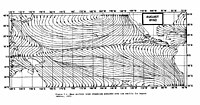
Photo from wikipedia
The Indian summer monsoon is a vital source of water and a cause of severe impacts for more than a billion people in the Indian subcontinent. The INCOMPASS project investigates… Click to show full abstract
The Indian summer monsoon is a vital source of water and a cause of severe impacts for more than a billion people in the Indian subcontinent. The INCOMPASS project investigates the mechanisms driving its onset and progression through an observational field campaign supplemented by high‐resolution numerical simulations for the 2016 season using UK Met Office models. A 4.4 km resolution convection‐permitting limited‐area model simulation (driven at its boundaries by a daily‐initialised global model) is used in this study, and verified against observations, along with short‐lead‐time operational global forecasts. These data show that the monsoon progression towards northwest India in June 2016 is a non‐steady process, modulated by the interaction between moist low‐level southwesterly flow from the Arabian Sea and a northwesterly incursion of descending dry air from western and central Asia. The location and extent of these two flows are closely linked to mid‐latitude dynamics, through the southward propagation of potential vorticity streamers and the associated formation of cyclonic circulations in the region where the two air masses interact. Particular focus is devoted to the use of Lagrangian trajectories to characterise the evolution of the aforementioned airstreams and complement the Eulerian monsoon progression analysis. The trajectories confirm that the interaction of the two airstreams is a primary driver of the general moistening of the troposphere associated with monsoon progression. They also indicate the occurrence of local diabatic processes along the airstreams, such as turbulent mixing and local evaporation from the Arabian Sea, in addition to moisture transport from remote sources. In summary, this combined Eulerian‐Lagrangian analysis reveals the non‐steady nature of monsoon progression towards northwest India. This process is driven by the interaction of different air masses and influenced by a synergy of factors on different scales, such as mid‐latitude dynamics, transient weather systems and local diabatic processes.
Journal Title: Quarterly Journal of the Royal Meteorological Society
Year Published: 2019
Link to full text (if available)
Share on Social Media: Sign Up to like & get
recommendations!